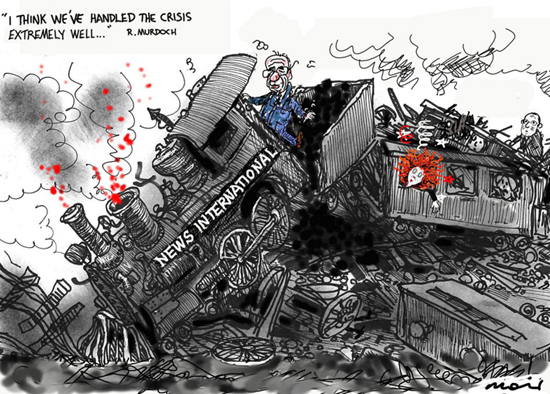
<input type="hidden" name="cmd" value="_s-xclick">
<input type="hidden" name="hosted_button_id" value="LT5M9Z68GX7JJ">
<input type="image" src="https://www.paypalobjects.com/en_US/i/btn/btn_buynowCC_LG.gif" border="0" name="submit" alt="PayPal - The safer, easier way to pay online!">
<img alt="" border="0" src="https://www.paypalobjects.com/en_US/i/scr/pixel.gif" width="1" height="1">
</form
%20COVER200tall.jpg)
Online media business models will succeed only if news organisations put more effort into regaining public trust, says Pacific Journalism Review in its latest edition.
In an issue devoted to the Leveson inquiry into Britain’s News of the World phone hacking scandal and the Finkelstein and Convergence reports on the Australian news industry, the research journal has questioned the “increasingly desperate” search for a business model.
“Is the new model the only answer to the current plight of journalism?” writes edition editor Dr Johan Lidberg from Monash University in Melbourne.
“Are media proprietors paying enough attention to the fact that the business model is built on the public trusting the journalistic practices that sit at the heart of the media brands?”
It is as important to retain public trust in journalism and to rebuild lost trust as the quest to make online journalism pay, Lidberg writes.
“Indeed, without, or with low, public trust in news media, will online journalism ever pay enough to sustain quality journalism?” he asks.
One important tool to retain and rebuild trust in any professional practice is openness and accountability.
Ethical codes
“It is to achieve this that industries construct ethical codes of conduct to complement the existing legal framework.”
Along with the British and Australian media crises, the journal also examines NZ Law Commission proposals for media accountability reforms.
“The NZ media has not yet demonstrated anything like the excesses that have been the focus of the Leveson inquiry,” comments media law analyst Linda Clark.
“Which means the government can afford to sit back and watch what happens in the UK and in Australia. It can allow the broadcasters to experiment with an extra layer of self-regulation.”
Contributors to this edition include professors Wendy Bacon, Duncan Bloy, Rodney Tiffen, Mark Pearson and Denis Cryle (an assessment of Rupert Murdoch’s flagship newspaper, The Australian, two decades on).
Dr Lidberg, who also contributes an article about Australian media attitudes to accountability, was assisted for the edition by Professor Chris Nash and managing editor Dr David Robie.
He said he hoped the issue would be the beginning of an ongoing debate where media practice accountability would be elevated to the same level as media regulation.
Conference theme
It is a theme for the annual conferences of both the Journalism Education Association of Australia (JEAA) and Journalism Education Association of New Zealand (JEANZ) next month.
Professor Wendy Bacon has also contributed an article for the new Frontline section of the journal devoted to a “research journalism” strategy in an academic environment.
“Over the last two decades, the history of journalism research in universities has been a dynamic and intellectually rewarding one,” writes Bacon, who is editor of Frontline.
“Frontline will build a public archive of examples of journalism research and exegeses to assist those who embark on the challenging process of critiquing their own work.”
Table of contents of the PJR October edition


